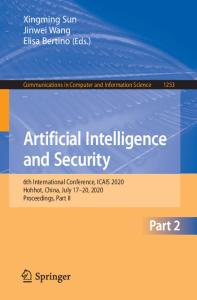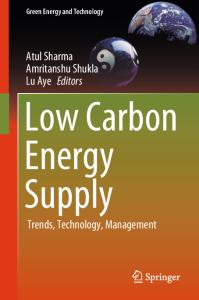Current trends and prospects of tidal energy technology
- PDF / 1,000,882 Bytes
- 16 Pages / 439.37 x 666.142 pts Page_size
- 28 Downloads / 314 Views
Current trends and prospects of tidal energy technology M. S. Chowdhury1,4 · Kazi Sajedur Rahman2 · Vidhya Selvanathan2 · Narissara Nuthammachot1 · Montri Suklueng5 · Ali Mostafaeipour7,8 · Asiful Habib9 · Md. Akhtaruzzaman2 · Nowshad Amin3 · Kuaanan Techato1,4,6 Received: 26 November 2019 / Accepted: 25 September 2020 © Springer Nature B.V. 2020
Abstract Generation of energy across the world is today reliant majorly on fossil fuels. The burning of these fuels is growing in line with the increase in the demand for energy globally. Consequently, climate change, air contamination, and energy security issues are rising as well. An efficient alternative to this grave hazard is the speedy substitution of fossil fuel-based carbon energy sources with the shift to clean sources of renewable energy that cause zero emissions. This needs to happen in conjunction with the continuing increase in the overall consumption of energy worldwide. Many resources of renewable energy are available. These include thermal, solar photovoltaic, biomass and wind, tidal energy, hydropower, and geothermal. Notably, tidal energy exhibits great potential with regard to its dependability, superior energy density, certainty, and durability. The energy mined from the tides on the basis of steady and anticipated vertical movements of the water, causing tidal currents, could be converted into kinetic energy to produce electricity. Tidal barrages could channel mechanical energy, while tidewater river turbines can seize the energy from tidal currents. This study discusses the present trends, ecological effects, and the prospects for technology related to tidal energy. * Kuaanan Techato [email protected] 1
Faculty of Environmental Management, Prince of Songkla University, Songkhla, Thailand
2
Solar Energy Research Institute, Universiti Kebangsaan Malaysia, 43600 Bangi, Selangor, Malaysia
3
Institute of Sustainable Energy, Universiti Tenaga Nasional (@The Energy University), Jalan IKRAM-UNITEN, 43000 Kajang, Selangor, Malaysia
4
Environmental Assessment and Technology for Hazardous Waste Management Research Center, Faculty of Environmental Management, Prince of Songkla University, 90110 Songkhla, Thailand
5
Faculty of Environmental Management, Prince of Songkla University, Songkhla, Thailand
6
Center of Excellence on Hazardous Substance Management (HSM), Bangkok 10330, Thailand
7
Environmental Assessment and Technology for Hazardous Waste Management Research Center, Faculty of Environmental Management, Prince of Songkla University, HatYai 90110, Thailand
8
Faculty of Environmental Management, Prince of Songkla University, HatYai, Thailand
9
Higher Institution Centre of Excellence (HICoE), UM Power Energy Dedicated Advanced Center (UMPEDAC), University of Malaya, Kuala Lumpur, Malaysia
13
Vol.:(0123456789)
M. S. Chowdhury et al.
Keywords Tidal energy · Current trends · Prospects · Environmental impact
1 Introduction The global demand for electrical energy has quickly risen in the modern times. According to the International
Data Loading...











